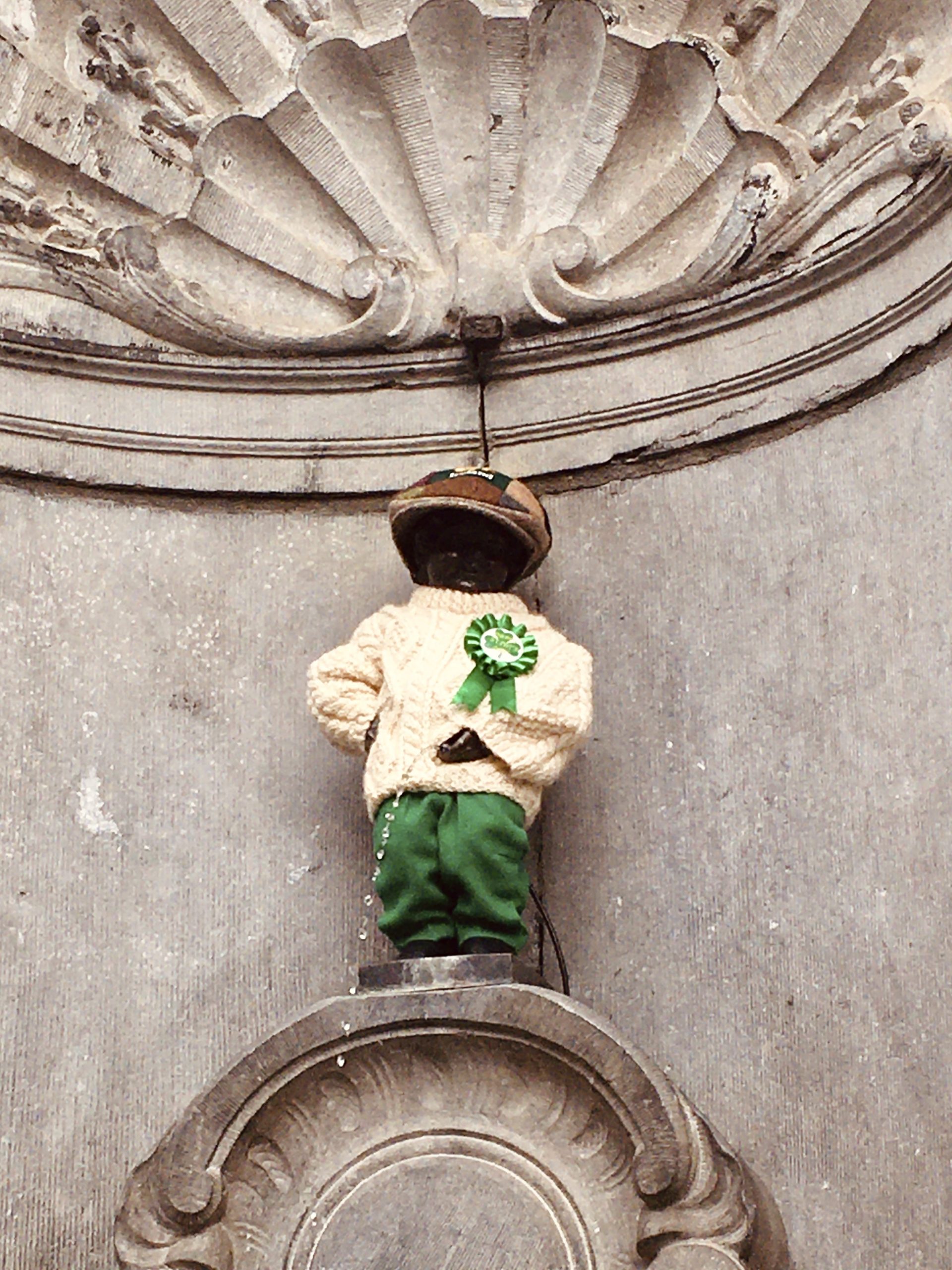The Three Leaves of my Saint Patrick’s Day Shamrock
I’ve been organising a Saint Patrick’s Day Pub Crawl for years now, in one form or another. At some point this endeavour became more craft beer focused, and the last couple of years, a run became part of the tradition as well. This year, live music was added to the mix, as a third part of the trinity.
Saint-Patrick’s Warm Up at Magasin4
The musical part actually started a week in advance already, with a concert of the French female Celtic rock band Toxic Frogs, and the Belgian Celtic punk rock band Black Tartans, and a happy reunion with a friend I hadn’t seen for a long time. Although Magasin4 announced it as a Saint-Patrick’s Warm Up event, I decided to wear my black kilt, which better fitted the not-quite-Irish groups and music.
Beer of the evening: Zinnebir!



The Celtic Seven at Brasserie de la Mule
On the eve of Saint Patrick’s Day Brasserie de la Mule invited The Celtic Seven to perform. Surprisingly, most of their songs were in French—how Irish even is Les lacs du Connemara?—but there were a lot more green clothes in the audience and amongst the staff! This time I actually did wear my saffron kilt!
As Brasserie de la Mule is specialised in German beers, that was what I drank that evening.



BMPH³ Trail 1924 – Saint Patrick’s Day Trail!
Only slightly hungover, a little after noon on Sunday—actual Saint Patrick’s Day— I headed over to Demey metro station a to run the BMPH³ Saint Patrick’s Day Trail. Plenty of green on this trail, since those who didn’t wear any green risked getting a very unpleasant ‘down down’. Exceptionally, we had to provide our own beer for circle, so I brought some beers actually from Ireland, one by Kinnegar (from Letterkenny, County Donegal) and the other one by Brehon (from Inniskeen, County Monaghan)!





Saint Patrick’s Day Pub Crawl – Craft Beer Edition
After a shower and a change, it was time for the highlight of the celebrations: the pub crawl! Once again, no bars seemed to be actually importing any Irish beers this year, so we tried to just stick to beers in Irish styles—actually just Irish dry stout—and the bars serving those beers.
First up was BBP Bailli! Ever since they opened, they’ve been serving the MC Nitro Stout, in memory of the Michael Collins bar that used to be in that location. We had it last year on the pub crawl, and fully expected it to be available this Saint Patrick’s Day as well. However, as it turns out, the beer was discontinued last year… They did have Oatly Stout though, so that hd to do. Will this then have been the last time BBP Bailli was included in the Saint Patrick’s Day Pub Crawl?
The next bar was Moeder Lambic Original, where I was hoping to find some Stouterik, or even some stouts by The Kernel! No such luck, so to stay on the black stuff, I went for Dupont’s Monk’s Stout, and when that keg was finally empty, the brand spanking new San Francisco Porter by De Ranke.
The last planned stop was L’Ermitage Saint-Gilles, where they had Ceallach, an Irish stout they made in collaboration with the Irish brewery Land & Labour, from Galway. Unfortunately they closed over an hour early, thereby sadly cutting our pub crawl short…






Next year Saint Patrick’s Day will be on a Monday, which will pose a challenge again!





















